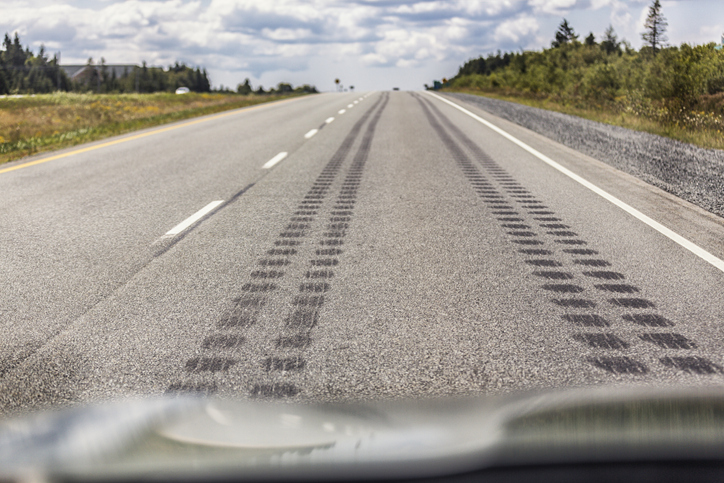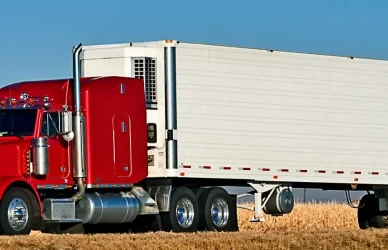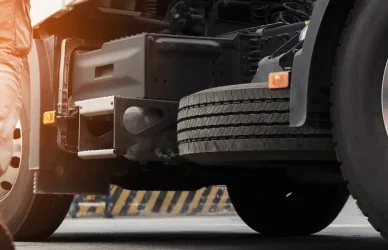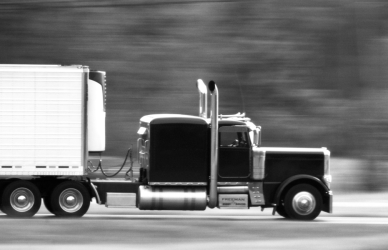Due to the attendance numbers at a recent technical session at this year’s TMC Fall Meeting in Cleveland about the impact of downsped drivelines on brakes, this question is apparently on the minds of more than a few fleets who worry that downpseeding is responsible for premature brake wear.
Nussbaum Transportation’s Maintenance Coordinator, Justin Worden, doesn’t believe that downspeeding is contributing to excessive brake wear at Nussbaum.
“We actually think with downspeeding and all the other systems, that we’re getting longer brake life,” he said. “If treated correctly, and with the right PM, we’re often not even [changing] one set of pads over the life of the truck.”
What is downspeeding?
Downspeeding is the modern term for gear-fast-run-slow. Cruising at a lower engine speed consumes less fuel, reduces carbon emissions, and can also reduce maintenance costs. Since the engine is running slower, so are all the auxiliary components such as compressors, pumps, and fans, which all contribute to lower parasitic losses and reduced wear and tear on those components.
These downsped drivetrains offer many benefits, but they’re not one-size-fits-all. It’s an application best suited to truckload operations on flat or rolling terrain, mostly on highways or long hauls. The benefits are reduced for regional and local applications with higher ratios of stop-and-go driving and less time spent in top gear. It’s also not really the best for fleets with a lot of mountain driving.
Is the problem the equipment, or the way it’s managed?
Kristopher Ptasznik, Cummins Technical Support Manger, explained in the session how engine brakes work, and described factors that affect engine brake performance. He mentioned displacement, turbo size and design, cam lobe design and valve lift duration, etc., all critical factors in engine brake performance. He also mentioned engine speed and described how it is relative to retarding power.
According to Ptasznik, Cummins had recently reconfigured its line-laul engine breaks to provide a bit more power at lower engine speeds. The engine brake retarding capability at typical downsped engine speed (1,100-1,200 rpm) is only about 150-250 horsepower. Before you write off the engine brake, consider the impact of dropping a single gear: the engine rpm bumps up by 300 rpm or so, which increases the engine brake retarding power to between 375 and 425 horsepower.
If the driver needs a little more retarding capability, another downshift will push the engine up to 1,700 or 1,800 rpm, pushing retarding power close to 500 horsepower. That’s sufficient to hold an 80,000-pound truck to a reasonable speed on a 6% grade all day long — without ever touching the service brakes. At 2,100 rpm, the line haul engine brake in Ptasznik’s example delivers about 525 retarding horsepower.
Ptasznik said the company made some hardware changes to increase the output at lower engine speed but that resulted some compromise at higher speeds.
He goes on to explain that it’s important for drivers to understand that engine sped can go higher under braking, that the rpm the engine will achieve when fueling is not necessarily the rpm where stuff starts coming apart, and that automated manual transmissions will not allow an engine to overspeed.
If drivers are accustomed to driving between 1,000 and 1,500 rpm, and believe bad things will happen over 1,500, they are robbing the rig of some serious retarding capability. When this happens, the natural thing for a driver to do is to hit the service brakes.
If you’re unsure of the top speed limit for your engine under engine braking, check with a rep from your engine supplier. They’ll likely tell you it’s around 2,000-2,200 rpm.
Nussbaum’s Justin Worten also spoke to the importance of driver training.
According to the TMC study, excessive brake wear is more of a driver training issue than a reason to condemn downspeeding. The only connection between brake wear and downspeeding is low engine speed, and thus, lackluster engine brake performance. However, when this is coupled with the reluctance to let the engine run at a higher rpm, with the threat of overspeed warning and write-ups, it’s understandable why drivers aren’t always using the full capabilities of the engine brake.











